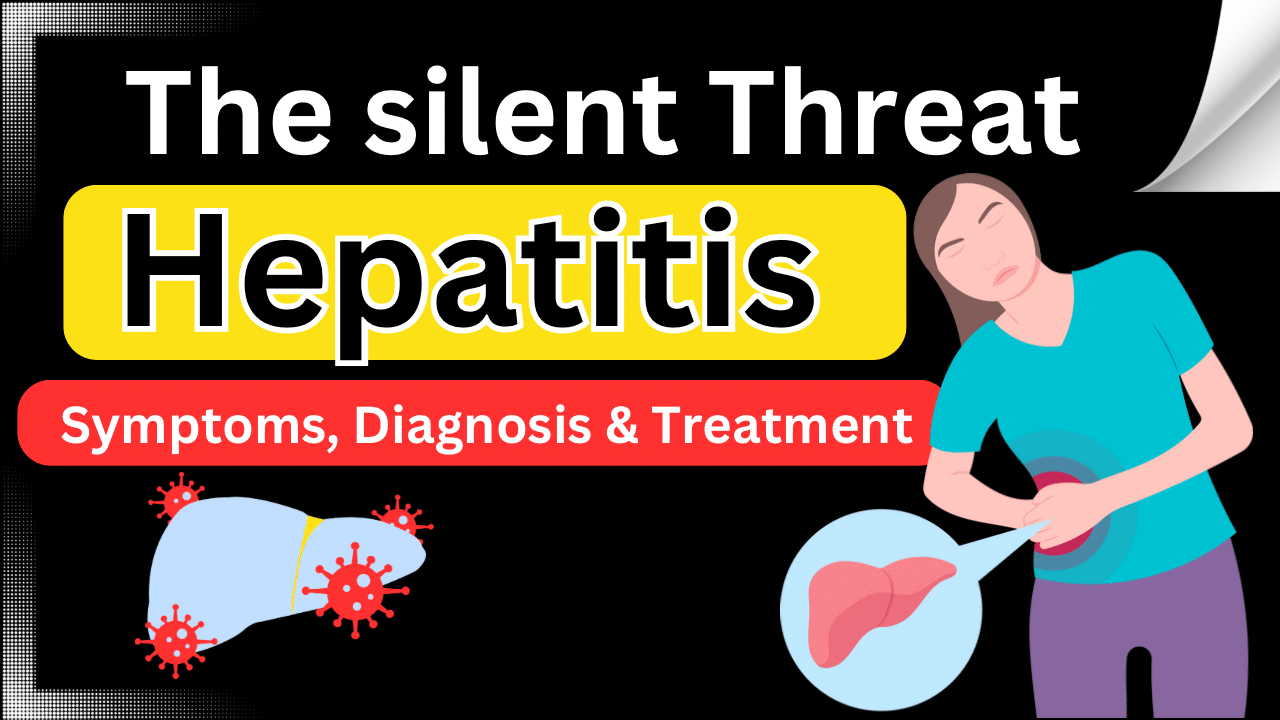Introduction: (The Silent Threat: A Comprehensive Guide to Hepatitis)
Hepatitis is a widespread health issue affecting millions of people worldwide.
It refers to inflammation of the liver, which can have various causes and manifestations.
In this article, we will delve into the different types of hepatitis, their causes, symptoms, diagnosis, and available treatments.
Types of Hepatitis:
There are several types of hepatitis, classified as hepatitis A, B, C, D, and E, each caused by different viruses.
Hepatitis A and E are typically cause by consuming contaminated food or water.
while hepatitis B, C, and D will usually transmitt through blood, sexual contact, or from mother to child during childbirth.
Causes of Hepatitis:
Hepatitis A is cause by the hepatitis A virus (HAV), usually spread through the fecal-oral route, often due to poor sanitation.
The Hepatitis B is cause by the hepatitis B virus (HBV), which can be transmitt through blood, semen, or other bodily fluids.
A Hepatitis C is caused by the hepatitis C virus (HCV) and is most commonly spread through sharing needles or other equipment to inject drugs.
delta Hepatitis , also known as hepatitis D , is a liver infection cause by the hepatitis D virus (HDV), which occurs only in conjunction with hepatitis B infection.
Hepatitis E will cause by the hepatitis E virus (HEV) and it is typically spread through contaminated water.
Symptoms of Hepatitis:
The symptoms of hepatitis will differ depending on the type and severity of the infection.
However, common symptoms include fatigue, jaundice (yellowing of the skin and eyes), abdominal pain, loss of appetite, nausea, vomiting, dark urine, and pale stools.
Some individuals may experience no symptoms, especially in the early stages of the infection.
Diagnosis :
Diagnosing hepatitis typically involves a combination of medical history, physical examination, and laboratory tests.
Blood tests are commonly use to detect the presence of hepatitis viruses and assess liver function.
Imaging tests such as ultrasound or MRI will be perform to evaluate the condition of the liver and surrounding organs.
In some cases, a liver biopsy will be necessary to identify the extent of liver damage.
Treatment :
The treatment for hepatitis varies depending on the type of virus and the severity of the infection.
In many cases, supportive care such as rest, adequate nutrition, and hydration is recommend to help the body fight off the infection.
Antiviral medications may be prescribe for chronic hepatitis B and C to reduce viral replication and prevent liver damage.
In some cases, liver transplant surgery will be necessary for individuals with advanced liver disease.
Prevention of Hepatitis:
Preventing hepatitis involves several strategies, including vaccination, practicing good hygiene, avoiding high-risk behaviors such as unprotected sex and sharing needles, and following food and water safety precautions.
Vaccines are available for hepatitis A and B and are recommended for individuals at increased risk of infection.
Conclusion: (The Silent Threat: A Comprehensive Guide to Hepatitis)
Hepatitis is a significant public health concern worldwide, with various causes and manifestations.
Understanding the different types of hepatitis, their causes, symptoms, diagnosis and treatment options
It is essential for prevention, early detection, and management of the disease.
By implementing preventive measures and seeking appropriate medical care, individuals can reduce their risk of hepatitis-related complications and improve their overall health and well-being.
